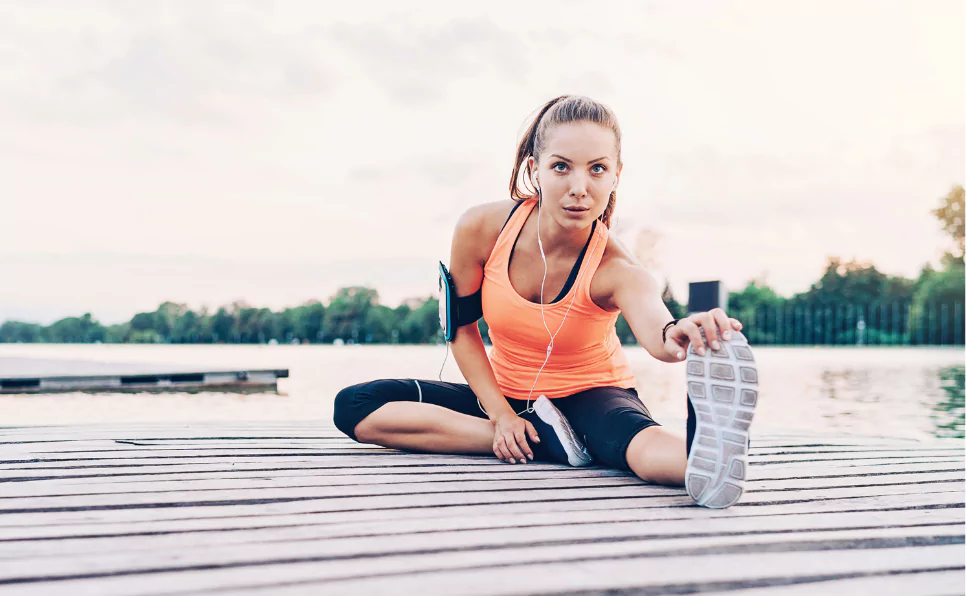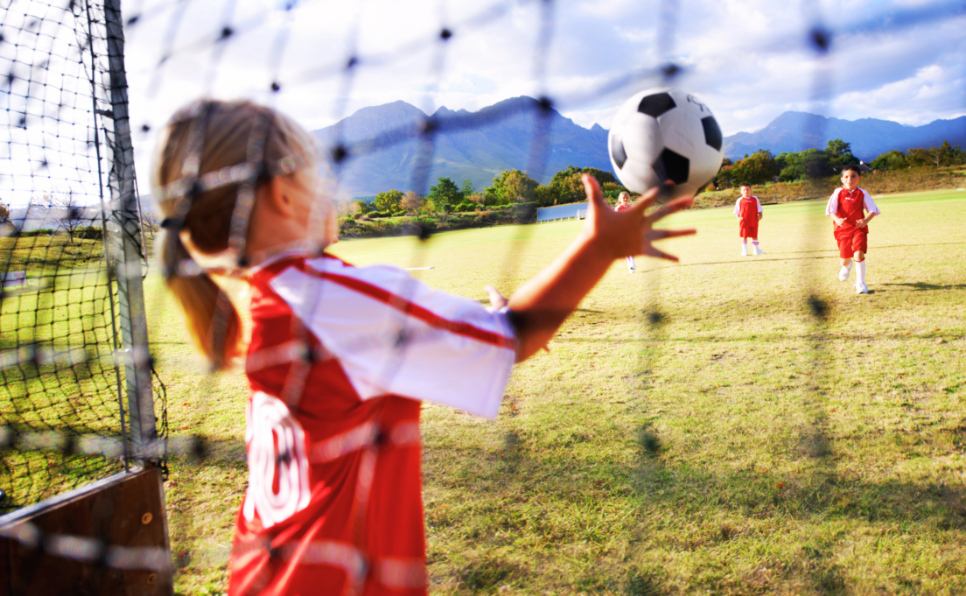Flexibility and movement are essential parts of our daily lives and sports activities.
From bending to pick up something off the floor to sprinting to catch a bus or stretching before a game, the ability to move our bodies freely and with ease is something many of us take for granted.
Yet, not everyone understands the true nature of flexibility, often associating it solely with activities like yoga or gymnastics.
But, flexibility is much more than being able to touch your toes or do a split. It’s about the range of motion available at our joints, and it impacts every movement we make.
A common misconception is that flexibility is all about the muscles. While muscles play a role, there’s a lot more going on under the skin.
Which brings us to an exciting area of study: the genetic factors influencing flexibility. Yes, your DNA can actually play a part in how flexible you are.
This doesn’t mean if you’re not currently flexible, you can’t improve. But it does give us insight into why some people seem to have an easier time with flexibility and movement than others.
Understanding Flexibility and Movement
So, what exactly is flexibility? It’s the ability of your joints to move through their full range of motion.
This range can be influenced by several factors, including the shape of the bones, the health of the cartilage, and, notably, the elasticity of the muscles and connective tissues surrounding the joints.
There are two main types of flexibility:
- Dynamic flexibility involves moving a joint through its range of motion with muscle effort. It’s what you’re using when you swing your arms while running.
- Static flexibility is about holding a joint in its furthest possible movement. This is what’s at play when you’re reaching forward to touch your toes and holding that position.
Both types of flexibility are important for a well-rounded fitness routine and can affect performance in different ways.
For example, dynamic flexibility is crucial for activities that require quick, explosive movements, while static flexibility can help with maintaining good posture and reducing the risk of injuries by allowing the muscles to lengthen and relax.
The musculoskeletal system, which includes bones, muscles, tendons, ligaments, and cartilage, plays a key role in flexibility.
The joints are where two bones meet, and they’re supported and moved by muscles and connective tissues.
How well these elements work together can significantly affect how flexible a person is. And here’s where genetics come into play.
Genetics can influence the structure of your bones, the composition of your muscles, and even how your connective tissue behaves.
Some people might be genetically predisposed to have more flexible hips, for example, while others might find that their genetic makeup makes them more prone to stiffness.
The Role of Genetics in Flexibility
Here’s how your genes play a significant role in your flexibility and movement capabilities. And guess what? It’s a lot more complex than just being born with it or not.
Genes and Muscle Composition
Your muscles are made up of different types of fibers. Think of them as the building blocks of your body’s ability to move, stretch, and perform. There are primarily two types:
- Fast-twitch fibers: These are your body’s sprinters. Quick, explosive actions? Thank these fibers.
- Slow-twitch fibers: These are your marathon runners. They’re all about endurance and sustainability.
The mix you’ve got affects not just your speed and endurance but also your flexibility.
Some of us are born with a higher proportion of one type over the other, influencing how flexible they can become.
Now, genetic variations come into play big time here.
Certain genes influence muscle fiber composition. It’s kind of like how a recipe can be tweaked – the basic ingredients (muscle fibers) are the same, but the outcome can vary widely depending on the proportions and variations.
Collagen and Connective Tissue
Collagen is this amazing protein that acts like the glue holding your body together.
It’s in your skin, bones, muscles, and, yes, your connective tissues. When it comes to flexibility, think of collagen as the elasticity of your body. More collagen, more stretch.
Genetics play a big role in how your body produces and organizes collagen.
Some people have genetic markers that make their collagen more flexible, while others might have a stiffer setup. This doesn’t just affect how you move but also how you heal from injuries.
Joint Structure and Ligament Elasticity
Ever wonder why some people can do splits without breaking a sweat while others struggle to touch their toes? A lot of it comes down to the structure of your joints and the elasticity of your ligaments and tendons – both of which are heavily influenced by genetics.
Some people have a genetic makeup that gives them looser ligaments, allowing for greater range of motion in the joints.
Others might have tighter setups, making them more stable but less flexible. It’s a trade-off.
Beyond Genetics: Environmental and Lifestyle Factors
But here’s where it gets really interesting. Your lifestyle and environment can tweak, to some extent, the hand of cards genetics dealt you:
- Training and physical activity: Regular flexibility training can actually change the structure of your collagen, making it more pliable.
- Age and gender: As you age, your collagen becomes less elastic. And generally, women tend to be more flexible than men, thanks to differences in hormones and body structure.
- Nutrition: What you eat can influence your body’s production of collagen and thus, your flexibility. Vitamin C, for example, is a key player in collagen synthesis.
Integrating Genetic Knowledge into Flexibility Training
Knowing your genetic predispositions can be a game changer in how you approach flexibility training.
Genetic testing can offer insights into your body’s natural inclinations, helping you tailor your routine to suit your genetic makeup.
If you know you’ve got genes that make your collagen more rigid, for instance, you might focus more on slow, sustained stretching to gently increase your range of motion.
Or, if you’ve got a higher proportion of fast-twitch muscle fibers, you might include more dynamic stretches to warm up those sprinters.
Final Thoughts
Here’s something I really want you to get: genetics is not destiny.
Sure, they set the stage. Physical activity, stretching routines, and other lifestyle choices can all contribute to improving your flexibility, regardless of your genetic predisposition.
It’s about working with what you’ve got and optimizing your body’s potential.
It’s a reminder that while we can’t change our DNA, we have the power to change how we use and take care of our bodies.
It’s not just about reaching your toes; it’s about reaching your personal best.
FAQs
Can genetic testing predict my flexibility potential?
Genetic testing can give you insights into your body’s natural inclinations towards flexibility by revealing info about muscle fiber composition and collagen production. However, it’s not a crystal ball. It outlines potential, not destiny. Your environment, lifestyle, and training play huge roles too.
How can I improve my flexibility if I have ‘unfavorable’ genetics?
Even if your genetics aren’t doing you any favors in the flexibility department, don’t sweat it. Focus on regular, consistent stretching routines, incorporating both dynamic and static stretches. Stay hydrated, maintain a balanced diet, and remember, progress might be slow, but it’s always possible.
Is there a specific age to start flexibility training for optimal results?
No specific age is the “right” time to start flexibility training. Kids can benefit from the natural elasticity of their bodies, but adults can see significant improvements too. The key is to start at any age and keep at it consistently for the best results.
Can diet and nutrition influence my genetic potential for flexibility?
Absolutely, diet and nutrition play a big part in your body’s flexibility. Foods rich in Vitamin C, for example, can boost collagen production, improving the elasticity of connective tissues. A well-balanced diet supports overall muscle and joint health, aiding in flexibility.
Are there any risks in tailoring my training based solely on genetics?
Relying solely on genetic information for your training can be risky. It might lead you to overemphasize certain areas while neglecting others, creating imbalances. It’s crucial to maintain a well-rounded routine that considers your whole body and its needs, not just your genetic predispositions.
For Further Reading
- Genetic Factors Associated With Human Physical Activity: Are Your Genes Too Tight To Prevent You Exercising? – Oxford Academic
- INFLUENCE OF GENETIC FACTORS ON EXERCISE AND TRAINING – Turkish Journal of Sports Medicine
- Is Flexibility Genetic? – ScienceDirect
- Genetic associations of body composition, flexibility and injury risk with ACE, ACTN3 and COL5A1 polymorphisms in Korean ballerinas – J Exerc Nutrition Biochem
- ASSOCIATION OF FLEXIBILITY WITH SOCIODEMOGRAPHIC FACTORS, PHYSICAL – Rev Paul Pediatr

Dr. Sumeet is a seasoned geneticist turned wellness educator and successful financial blogger. GenesWellness.com, leverages his rich academic background and passion for sharing knowledge online to demystify the role of genetics in wellness. His work is globally published and he is quoted on top health platforms like Medical News Today, Healthline, MDLinx, Verywell Mind, NCOA, and more. Using his unique mix of genetics expertise and digital fluency, Dr. Sumeet inspires readers toward healthier, more informed lifestyles.





